Last Chance to Catch NYC's Holiday Notalgia Train
We met the voices of the NYC subway on our nostalgia ride this weekend!


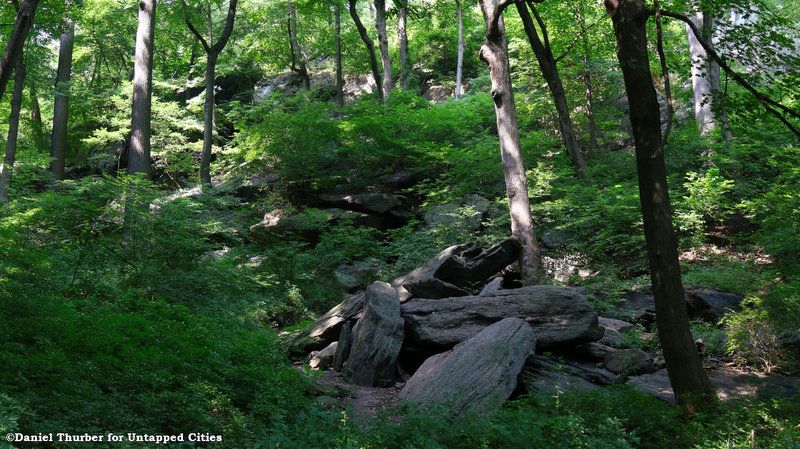
Owned and maintained by the city, Inwood Hill Park is a reminder of what Manhattan might have looked like before steel and concrete overtook the borough. Hundreds of acres of natural land still exist in the park, making for a quiet reprieve in “the city that never sleeps.”

The northern tip of Inwood Hill Park (left), looking towards Marble Hill
Inwood Hill Park is home to the last natural forest and salt marsh in Manhattan. Aside from a few trails here and there, the 196-acre park contains a huge span of primordial green space, which is made up of mostly thick deciduous forest that has remained relatively untouched since the colonial days. When the Department of Parks purchased the land for Inwood Hill Park in 1916, the salt marsh was also saved and later landscaped. It serves as lasting reminder of the system of salt marshes that used to surround the island.
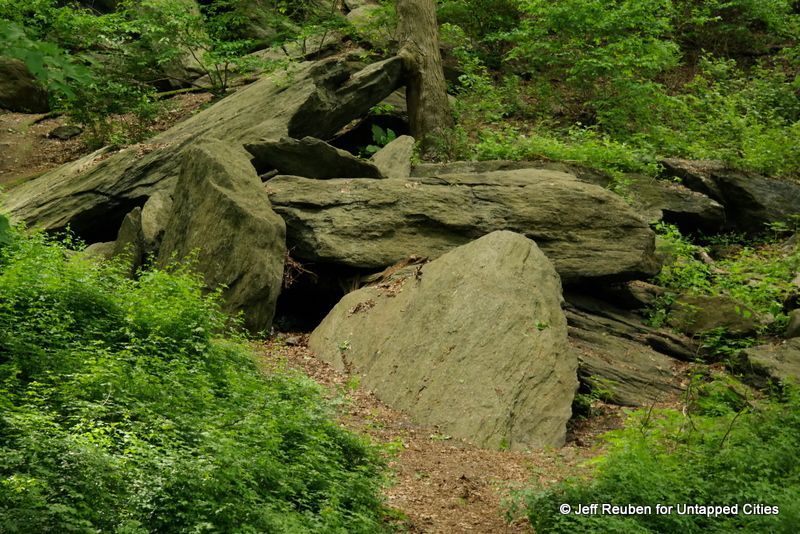
Based on its natural landscape, it may be difficult to believe that human activity has been present in Inwood Hill Park from prehistoric times. In the 17th century, the Lenape Native American tribes inhabited the area, using the park’s caves as seasonal living quarters, where they could fish and harvest shellfish from the nearby river. They stayed in the area until 1643, when they were attacked by Mohawks, forcing them to leave behind various items, including pottery, weapons and tools. The caves were later found to contain remains of old campfires and artifacts.
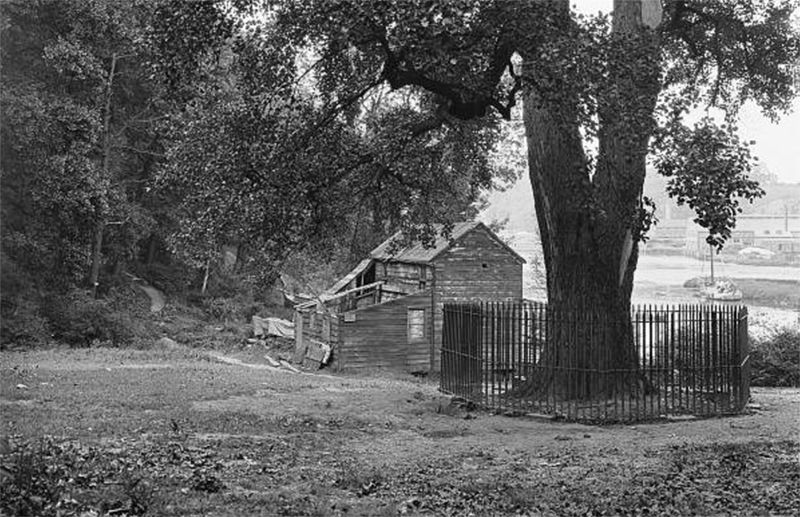
Tulip Tree under which the ‘sale’ of Manhattan took place in 1626. Photo via Wikimedia Commons in public domain.
According to legend, in 1626, Peter Minuit, the Director General of New Netherland, “purchased” Manhattan from the Lenape in exchange for a shipment of goods worth 60 guilders (the Netherlands’ form of currency from the 17th century until 2002). The reputed sale took place under a tulip tree, which survived in the location for centuries, growing for 280 years before its death in 1938. Today, the iconic site is marked by a plaque placed there by the Peter Minuit Post of the American Legion.
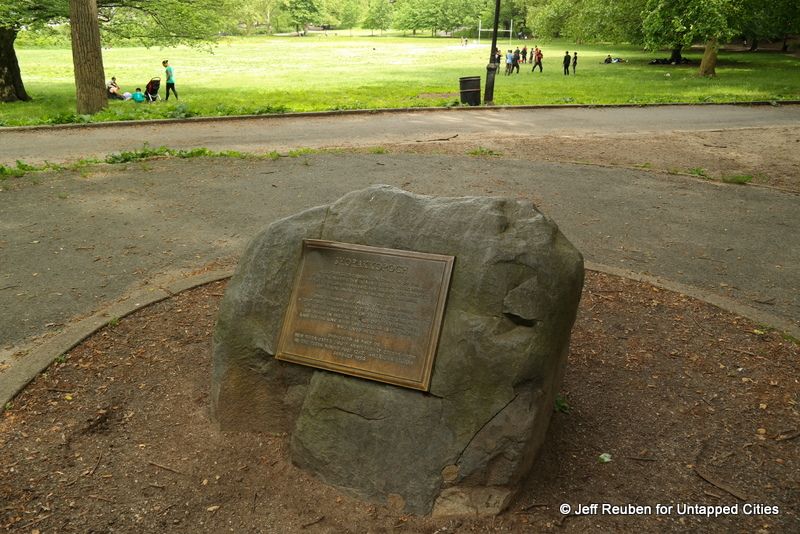
Before the Department of Parks purchased the land for Inwood Hill Park in 1916, the site was known as Cock or Cox Hill during the Colonial and post-Revolutionary War period. Large areas of the park are comprised of hills, which might explain part of its name. However, theories suggest that the green space could actually be named after a variant of the word “Shorakapok,” which was used by the Native Americans to refer to to the site. According to the Department of Parks, it translates to “the wading place,” “the edge of the river,” or “the place between the ridges.”
 The last remnant of the Seward family estate, the entrance arch, still exists hidden in plain sight along Broadway
The last remnant of the Seward family estate, the entrance arch, still exists hidden in plain sight along Broadway
Before Inwood Hill Park was transformed into parkland, the site was occupied by a variety of institutions and country homes. In the 1800’s, there was a charity house for women, an orphanage, and a free public library, which would later become the Dyckman Institute. It was also occupied by wealthy families who lived in country retreats. Some notable names include the Straus family. Isidor Straus was the co-owner of Macy’s before he and his wife Ida lost their lives on the RMS Titanic. Moreover, the Lords of the Lord & Taylor owned two mansions within the park, which where later destroyed by a fire.
The last remnant of the Seward family estate, the entrance arch, still exists hidden in plain sight along Broadway.

The Natural Resources Group of the Department of Parks seeks to conserve our city’s natural resources through advocacy and restoration efforts. This has become even more imperative as many of the forests in the city continue to fall victim to disturbances, including soil erosion, flash flooding, and the intrusion of invasive plant species. As part of the restorative efforts, the NRG has a forest restoration team to maintain northern Manhattan’s parks. Inwood Hill, which has successfully undergone invasive species removal and native species planting, serves as the group’s basis for operation.

Despite appearing very natural in some areas, Central Park is entirely landscaped and planned. By contrast, Inwood Hill Park is largely natural, as evidenced by its caves and ridges. Sitting on a high ridge, elevated 200 feet above the Hudson River, the green space boasts a varied and geologically diverse land, consisting of marble, schist and limestone. In many areas, it is also scoured by shifting glaciers, which left behind unique formations, including the largest glacial porthole in the city.
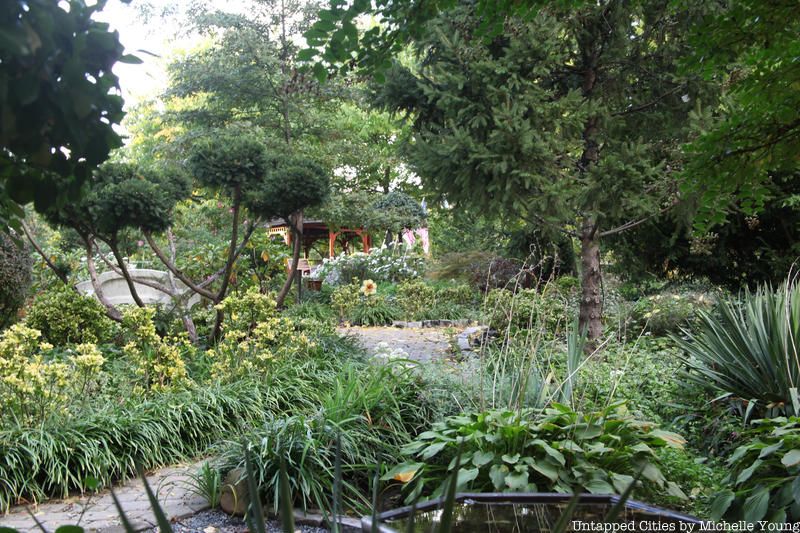
Due to its natural landscape, Inwood Hill Park is home to over 250 species of trees and flowers, some of which cannot be found anywhere else on Manhattan, including “Dutchman’s breeches” (Dicentra cucullaria). Moreover, the forests within the park contain some of the largest tulip trees in New York City.
The flora fosters an ideal environment for wildlife to congregate. As such, the park is home to over 150 species of birds, including woodpeckers and waterfowl, as well as salamanders, flying squirrels and meadow voles. At one point, foxes also occupied the area, but they have since disappeared.

Fort Cockhill (known as Fort Cock or Fort Cox) was once located on the northwestern corner of the park on Cox’s Hill or Tubby Hook Hill (now Inwood Hill Park). Built by the Continental Army during the Revolutionary War, the 18th-century military fortification served as an outpost of Fort Tryon, overlooking the Hudson River and the Harlem River valley, and acting as the defense for northern Manhattan. It was a five-sided, circular structure, measuring between ten to twelve feet in height. In November 1776, however, the structure was captured by Hessian (German) troops of the British Army and held in their possession until the war ended seven years later.
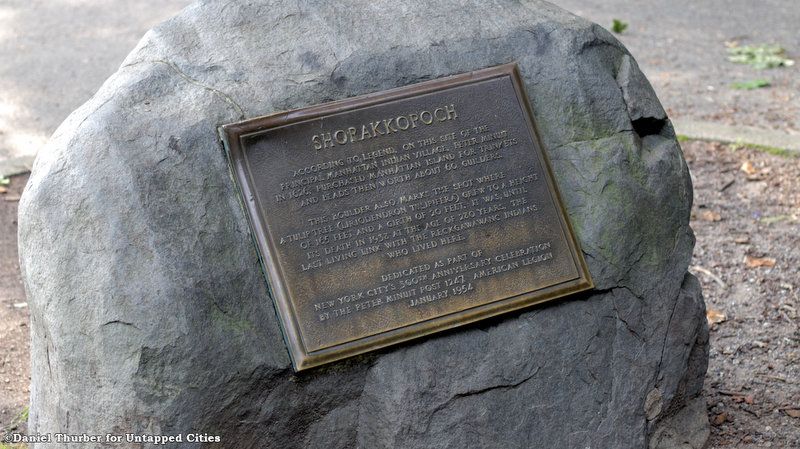
There are three major fault lines in New York City, which run through parks: the Mosholu Fault is located in Van Cortlandt Park in the Bronx, and the 125th Street Fault and Dyckman Street Faults can be found in Upper Manhattan. The Dyckman Street Fault, which lies on the southern border of Inwood Hill Park, remains seismologically active, and actually helps to outline its boundaries. In 1989, the activity along the fault caused a magnitude 2 earthquake.
Next, check out The Top 10 Secrets of NYC’s Fort Tryon Park.
Subscribe to our newsletter